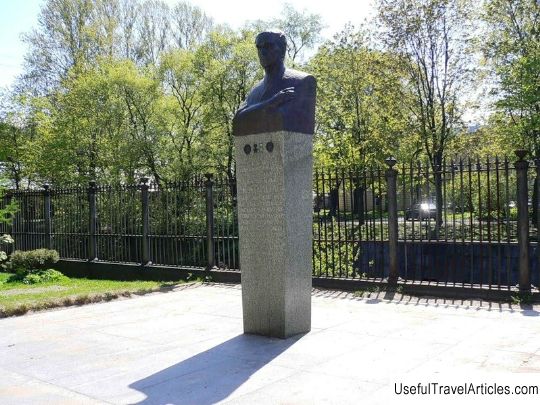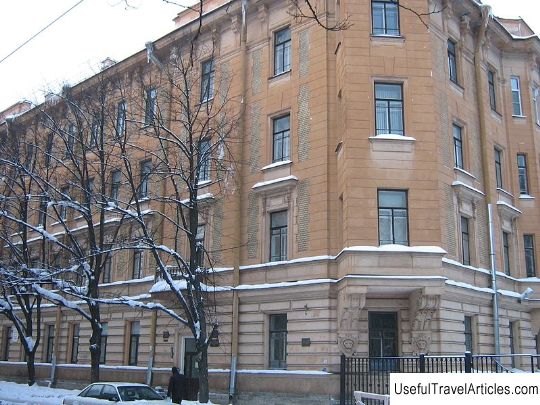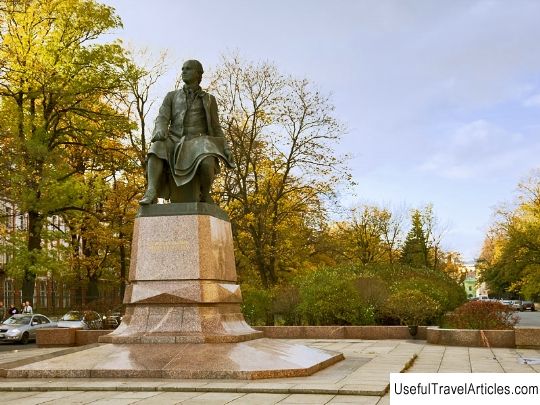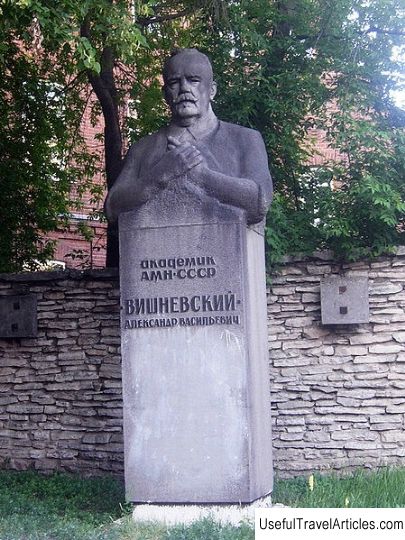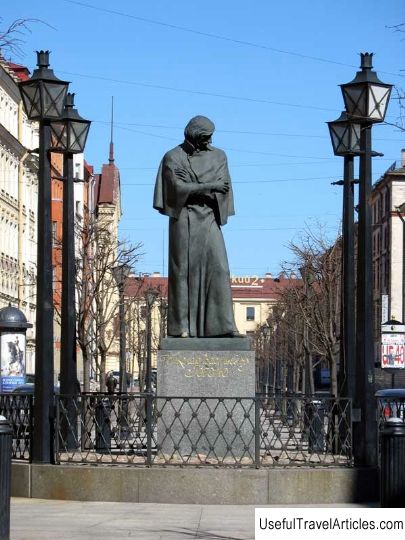Monument to the Dog description and photo - Russia - St. Petersburg: St. Petersburg
Rating: 7,5/10 (100 votes) 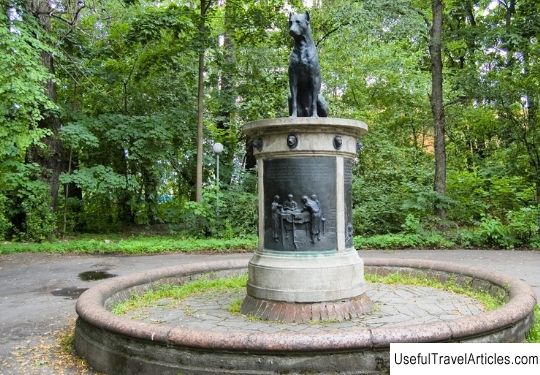
Monument to the Dog description and photo - Russia - St. Petersburg: St. Petersburg. Detailed information about the attraction. Description, photos and a map showing the nearest significant objects. Photo and descriptionMonuments are erected not only in honor of great people, great events or great deeds. They are also being installed for loyal friends. One of these monuments is located in St. Petersburg at the institute where the famous scientist Ivan Petrovich Pavlov worked. It is now called the Institute of Experimental Medicine. Why was the monument erected specifically to the dog? I.P. Pavlov started while studying at the university. He then researched the physiology of blood circulation, for his work he was awarded a gold medal. I.P. Pavlov, being a brilliant surgeon, differed from other researchers of that time in that he kept the animals he experimented with life. Physiological laboratory, where I.P. Pavlov conducted a large number of experiments, belonged to the Institute of Experimental Medicine. In 1891 I.P. Pavlov was appointed its head. The laboratory consisted of three rooms: the first room served as an operating room, the second was used for experiments, and the dogs lived in the last room. The wooden building in which the laboratory was located stood on the Aptekarsky Island. Through the efforts of I.P. Pavlova, the material arrangement and equipment of the laboratory were at a high level, special attention was paid to the conditions in which the dogs lived. Soon, in 1892, the laboratory moved to a new building with two floors, where, in addition to operating rooms, a clinic was also located, where animals were nursed in the postoperative period or when they were sick. Money from donations was spent very sparingly, nothing superfluous or pompous was bought. According to the stories of contemporaries, the laboratory premises were furnished with frayed, but solid furniture, and equipment, mostly independently made from scrap materials and standard blocks. If you do not know that I.P. Pavlov, you can never think that so many discoveries have been made here that have brought undeniable benefits to the whole world. Money for the laboratory and research was donated by: Alfred Nobel (for the fight against cholera); Ledentsov Society (Founded by the famous merchant of the first guild, philanthropist - Khristofor Semenovich Ledentsov to assist and support scientists in their research work). With funds donated by the Ledentsov Society, a new, modern laboratory was built. This laboratory was equipped with excellent soundproofing, for which she was given the name - "The Tower of Silence". In this laboratory, experimental animals were exposed to air and electricity. Due to the larger number of dogs, mostly shepherds, the laboratory was also called the canine kingdom. The works of I.P. Pavlova were diverse. He was awarded the Nobel Prize for his work devoted to the study of physiological processes during digestion. The beginning of the twentieth century was marked by new research, now in the field of conditioned reflexes. By the way, like Newton, Pavlov was helped by chance. He drew attention to the fact that when the minister was delivering food to the dogs, then, hearing the noise of his steps, the dogs began to salivate intensively, although no one was going to feed them at that moment, it was just that the meal time had not come yet, and the minister was walking along the corridor. Allocations for the maintenance of the laboratory were small and there were cases when Ivan Petrovich had to buy dogs, food and pay salaries to the laboratory staff for his own funds. Despite all the difficulties, Pavlov's laboratory in 1904 was one of the best research laboratories of its direction on the European continent. Ivan Petrovich was very fond of animals, it was he who suggested erecting a monument to them, with which he wanted to celebrate the importance of dogs in experimental physiology in the study of the activity of nerve endings. The sculptor and architect of the monument was I.F. Bezpalov, erected a monument in 1935 during the 15th International Congress of Physiologists.       We also recommend reading Jesuit Church (Jesuitenkirche) description and photos - Switzerland: Lucerne Topic: Monument to the Dog description and photo - Russia - St. Petersburg: St. Petersburg. |
